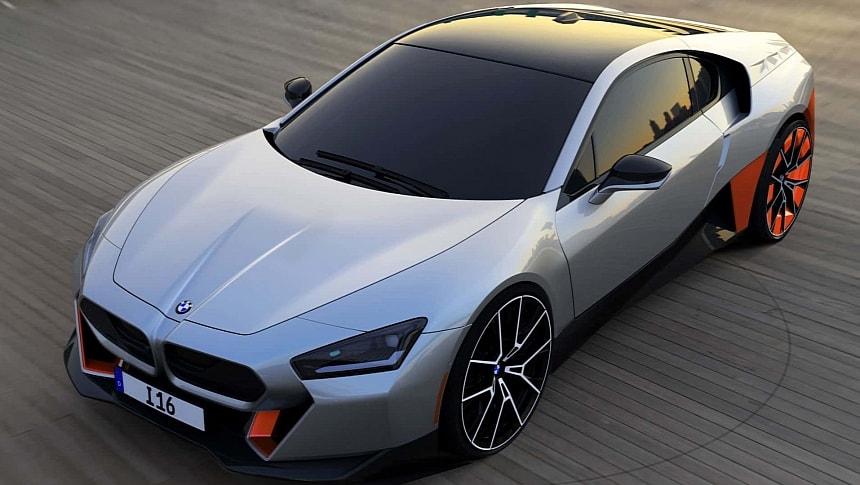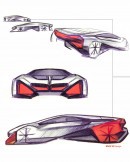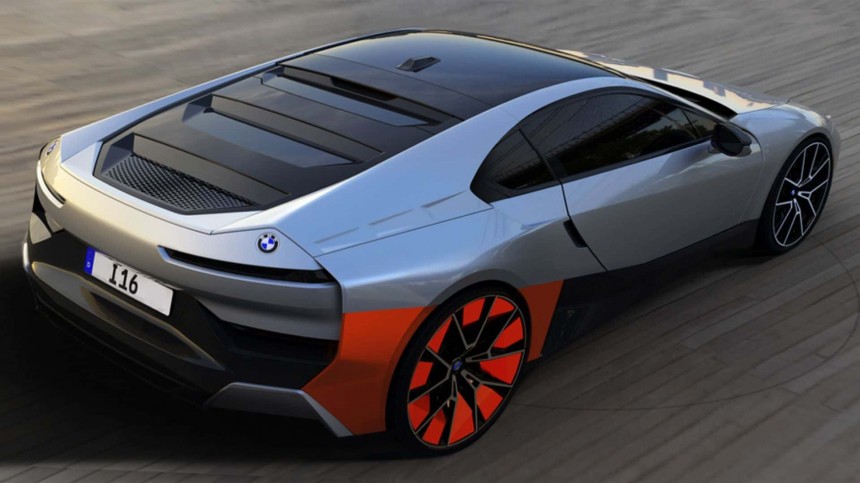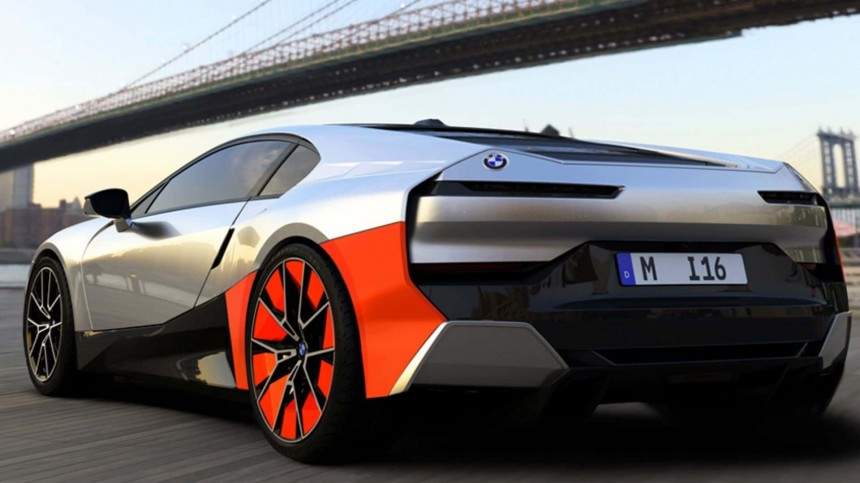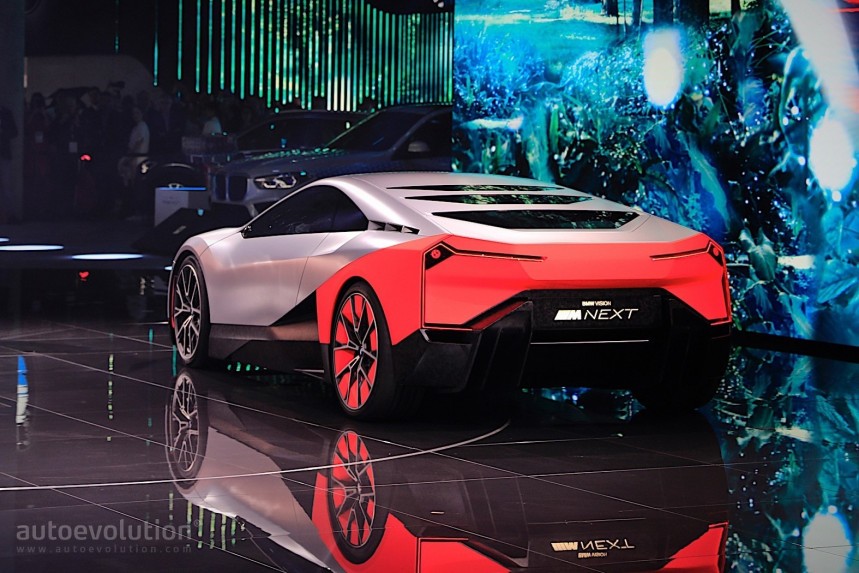BMW has been keeping this secret for years. About ten years ago, they came up with the idea of building a successor for the i8 sports car. The project was greelighted, but months into developing the car, it was canceled, and the model never saw the light of day. It was just bad timing. A financial crisis was threatening the automotive world just as any sector of the economy.
Years later, way after after the failed project, BMW's Head of Design Domagoj Dukec discloses the premium carmaker's plans to roll out a replacement for the i8. Domagoj was involved in the project and tells the story of the BMW that never came to life.
The model was supposed to come as a replacement for the i8 and should have been calledthe i16. It was conceived as an evolution from the Vision M Next show car, which the brand unveiled in 2019, causing quite a commission among BMW enthusiasts, who practically begged the carmaker to build a production version of it.
The concept car also borrowed various lines from the iconic M1 from the late 1970s and was hoping to carry over the sports. With the louvered rear window and BMW roundels positioned inside the taillamps, the Vision M Next brought retro vibes combined with a futuristic silhouette.
Dukec describes the i16 as a vehicle that had the style of a future classic, however, sporting design cues that meant a step forward from the M1. The team designed and built the car, inside and out, in less than 12 months.
The model was set to join the i3 in the BMW i lineup. The German automaker also discontinued their first production electric car in 2022, coming up with a whole new approach to zero-emission mobility and rolling out an electric variant of every ICE-powered model.
It was really not the right time to launch a car that would slot in a niche that was not doing well. Customers the world over wanted crossovers, SUVs, and pickup trucks. A sports car at that moment would have been a bet that might have been lost from the very start.
"But that's how life goes sometimes," Domagoj Dukec wrote in the post he uploaded to Instagram, explaining that he is used to the many twists and turns such projects have to deal with. However, "there is always a new project waiting around the corner."
Dukec does not mention anything about the powertrain that the i16 was supposed to receive, but it probably sported some sort of electrification. Unveiled at the Frankfurt Motor Show in 2013, the i8 entered production in 2014. It was powered by a hybrid system, which was built around the 1.5-liter turbocharged engine, which generated 228 horsepower (231 metric horsepower).
The plug-in hybrid ran from 0 to 62 mph (0 to 100 kph) in 4.4 seconds and hit a top speed electronically limited to 155 mph (250 kph). The car was equipped with a lithium-ion battery, with a capacity of 7.1 kWh, enabling it to drive on electric power only for 23 miles (37 kilometers).
The figures were not enough to keep the BMW i8 going, and the Germans halted production in June 2020, after 20,465 examples sold worldwide in the full six years.
The Vision M Next Concept, however, came with a turbocharged four-cylinder petrol engine and an electric motor for a total of 591 horsepower (600 metric horsepower), which made it flash from 0 to 62 mph in 3.0 seconds on its way to a top speed of 186 mph (299 kph).
The exact powertrain that the BMW i16 should have received, we will probably never know. Unless an engineer from BMW decides to disclose it sometime in the future. Hopefully, we won't have to wait four more years to find out about it before someone else from BMW decides to reveal another secret. Or maybe the BMW head honchos will regret the cancelation of the project and greenlight and send it to production fast to make up for the lost time.
The model was supposed to come as a replacement for the i8 and should have been calledthe i16. It was conceived as an evolution from the Vision M Next show car, which the brand unveiled in 2019, causing quite a commission among BMW enthusiasts, who practically begged the carmaker to build a production version of it.
The concept car also borrowed various lines from the iconic M1 from the late 1970s and was hoping to carry over the sports. With the louvered rear window and BMW roundels positioned inside the taillamps, the Vision M Next brought retro vibes combined with a futuristic silhouette.
Dukec describes the i16 as a vehicle that had the style of a future classic, however, sporting design cues that meant a step forward from the M1. The team designed and built the car, inside and out, in less than 12 months.
The BMW i16 was just not meant to be
The car featured the carbon-fiber-reinforced plastic monocoque of the BMW i8 and also styling elements. But it was just not meant to be. The pandemic hit in 2020, then the financial crisis took over the world. BMW withdrew financing for the project, and work on the i16 immediately stopped. The team of designers and that of engineers were left wondering about how much potential their project going into production would have had. And it was so close.It was really not the right time to launch a car that would slot in a niche that was not doing well. Customers the world over wanted crossovers, SUVs, and pickup trucks. A sports car at that moment would have been a bet that might have been lost from the very start.
"But that's how life goes sometimes," Domagoj Dukec wrote in the post he uploaded to Instagram, explaining that he is used to the many twists and turns such projects have to deal with. However, "there is always a new project waiting around the corner."
Figures did not help the i8
The turbo engine received the assistance of an electric motor, which brought along 129 horsepower (131 metric horsepower) and 184 pound-feet (250 Newton meters) of torque for a total system output of 369 horsepower (374 metric horsepower) and 420 pound-feet (570 Newton meters) of torque.The plug-in hybrid ran from 0 to 62 mph (0 to 100 kph) in 4.4 seconds and hit a top speed electronically limited to 155 mph (250 kph). The car was equipped with a lithium-ion battery, with a capacity of 7.1 kWh, enabling it to drive on electric power only for 23 miles (37 kilometers).
The figures were not enough to keep the BMW i8 going, and the Germans halted production in June 2020, after 20,465 examples sold worldwide in the full six years.
The exact powertrain that the BMW i16 should have received, we will probably never know. Unless an engineer from BMW decides to disclose it sometime in the future. Hopefully, we won't have to wait four more years to find out about it before someone else from BMW decides to reveal another secret. Or maybe the BMW head honchos will regret the cancelation of the project and greenlight and send it to production fast to make up for the lost time.
